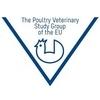Explore all the information on
Bacterial diseases in poultry
Bacterial diseases comprise approximately half of the non–outbreak-related mortality in broiler breeders and commercial layers. During the first week of a broiler's life, approximately 50% of the mortality may be caused due to bacterial infections. Outbreaks due to bacterial infections may increase the mortality dramatically and in some cases almost eradicate flocks. E. coli and Gram-positive cocci infections are responsible for mortality and production losses in poultry of all age groups and all production systems and may be regarded as multifactorial. Subsequently, efforts in understanding and controlling these infections are highly important. Although necrotic enteritis is primarily a disease affecting young chickens, this infection is of major significance in any production system. Besides increased mortality, the production losses observed in subclinical infections may be dramatic.
I would be grateful if somebody can explain why mycoplasma maternal antibody titre is always negative in day-old chick from vaccinated parent breeder when tested by Elisa? Why do day-old chicks tested for mycoplasma maternal antibody at 3 week old with Elisa and why does that happen with mycoplasma and not another respiratory disease? ...
Comments : 4
Recommendations: 0
...
Comments : 0
Recommendations: 0
.jpg&w=3840&q=75)

The Digital Evolution of the Poultry Industry: Imagine. Collaborate. Gain.
Suggested link
INTRODUCTION Antimicrobial resistance (AMR) has become a major threat for public health worldwide (WHO, 2014). One of the main factors contributing to the emergence of resistant bacteria has been the massive use of antimicrobials for growth promotion and disease prevention for several years in animal production (Guo et al., 2018; Mehdi et al., 2018). However, although nowadays the use of antibiotics in poultry is a controlled practice (ESVAC, 2017), different studies...
Comments : 0
Recommendations: 0
1. Introduction Escherichia coli is a Gram-negative bacterium that typically inhabits the intestine of vertebrates and is considered a usual member of the digestive flora in animals. However, under favorable circumstances, it may acquire genes associated with pathogenicity/virulence and cause clinical disease in most domestic farmed species. Colibacillosis is a systemic fatal disease, which occurs when an E. coli strain escapes digestive barriers and invades the internal organs....
Comments : 0
Recommendations: 0
Quebracho and Chesnut Polyphenols show strong bactericidal and bacteriostatic activities against Clostridium perfringens, said Dr. Mariano Fernandez-Miyakawa, R&D in Poultry Health, INTA-CONICET, during the 2019 Multi-State Poultry Feeding and Nutrition Conference and Silvateam’s Technical Symposium....
Comments : 2
Recommendations: 2
Caseous exudate fill the air sacs in one day old chicks. Mainly due to mycoplasma due to vertical transmission. ...
Comments : 1
Recommendations: 0
Poultry production programmes require elimination or reduction of the use of in-feed antibiotics growth promoters (AGP). This has led to an increase in the occurrence of necrotic enteritis, making it an economically significant poultry disease requiring an alternative nutritional interventions. Probiotics offer one alternative to AGP because they can elicit specific actions that promotes the development and maintenance of a stable gut microbiome, leading to a reduction in enteric disease and...
Comments : 0
Recommendations: 0
1. INTRODUCTION Necrotic enteritis is an emerging worldwide disease of poultry. It is characterized by sever diarrhea, necrotic inflammation of the intestinal tract and necrotic foci in liver, kidney and cecum (Kohler, 2000). The disease resulting in severe economic losses that exceed 2 billion US dollar / year due to bird losses, treatment costs and cost of disease preventive measures (Lovland and Kaldhusdal, 2001). Necrotic enteritis has two clinical forms in chickens; the...
Comments : 0
Recommendations: 0
Introduction Virulent bacteria are incriminated in huge economic casualties in the duck industry globally. Bacterial diseases cause higher mortality rates in ducks more than viral diseases. The mortality rates and bacterial diseases have been expanded worldwide [1-2]. Multiple of bacterial pathogens including P . multocida , Escherichia coli, Staphylococci , Pseudomonas aeruginosa, and Salmonella had become the major threats of duck...
Comments : 0
Recommendations: 0
Part I: Are you doing enough to control Salmonella?
Salmonella ranks among the world´s biggest threats to health. In the United States alone, it is thought to be responsible for around 378 deaths and an estimated 19,336 hospitalisations each year. And these are just the reported cases. If you´ve ever had to take a few days off work with a nasty case of "food poisoning", but not bothered...
Comments : 12
Recommendations: 0
INTRODUCTION Necrotic enteritis (NE) is an acute Clostridium infection, which is characterized by severe necrosis of the intestinal mucosa (Parish, 1961). NE has recently become a significant problem for the poultry industry because of restrictions on antibiotic usage and high-density production conditions (Williams, 2005). In the United States, NE has caused enormous economic losses in the poultry industry (accounting for > $2 billion/year), largely due to the impaired...
Comments : 0
Recommendations: 0
1. Drinking Water as a Vehicle of Diseases Water is essential to life. An adequate, safe and accessible supply must be available to all. Improving access to safe drinking-water can result in significant benefits to health. Every effort should be made to achieve a drinking water quality as safe as possible [1]. Many people struggle to obtain access to safe water. A clean and treated water supply to each house may be the norm in Europe and North America, but in developing...
Comments : 3
Recommendations: 2
Dear Experts, I have a layer farm of around 4000 birds. Currently, we are facing severe problem of Typhoid in birds. We have tried following medicines with consultation of Doctors, 1. Neflox 2. KEPRO NCO From above medicines, we didnt find any fruitful results only little decrement of mortality from this treatment ....What should we do? Looking forward to your valuable comments... ...
Comments : 7
Recommendations: 0
.jpg&w=3840&q=75)

Effects of superdoses of phytase on peaking Hy-Line W-36 laying hen egg production and egg quality
Suggested link
To study the impact of dietary protein on ileal Clostridium perfringens and the intestinal barrier two diets were used, one with 22% crude protein (CP; basal diet) and 1.21% digestible lysine, and a second diet with 30% CP and 1.38% digestible lysine (High protein diet; HP). Each diet was tested with or without 0.05% of a Bacillus licheniformis and its derived protease (CIBENZA® EP150 : B+P) resulting in 4 groups in a 2x2 arrangement (9 replicates/8 birds each one for 28 days)....
Comments : 0
Recommendations: 1
Tom Tabler (Mississippi State University) explained how this disease is detected and gave crucial management advice when dealing with it on the farm, during IPPE 2020 in Atlanta, USA. ...
Comments : 0
Recommendations: 1
Leandro Redondo (INTA) discussed the pathogenesis of Clostridium perfringens and the concepts that could help design effective strategies to control it, during the 8th Symposium on Gut Health in Production of Food Animals in St. Louis, USA....
Comments : 4
Recommendations: 3
.jpg&w=3840&q=75)

The Digital Evolution of the Poultry Industry: Imagine. Collaborate. Gain.
Suggested link
Allen Byrd (USDA) talked about the interaction between epithelial cells, the gut microbiome and the immune system, during the 8th Symposium on Gut Health in Production of Food Animals in St. Louis, USA....
Comments : 2
Recommendations: 1



















.mp4&w=3840&q=75)

















